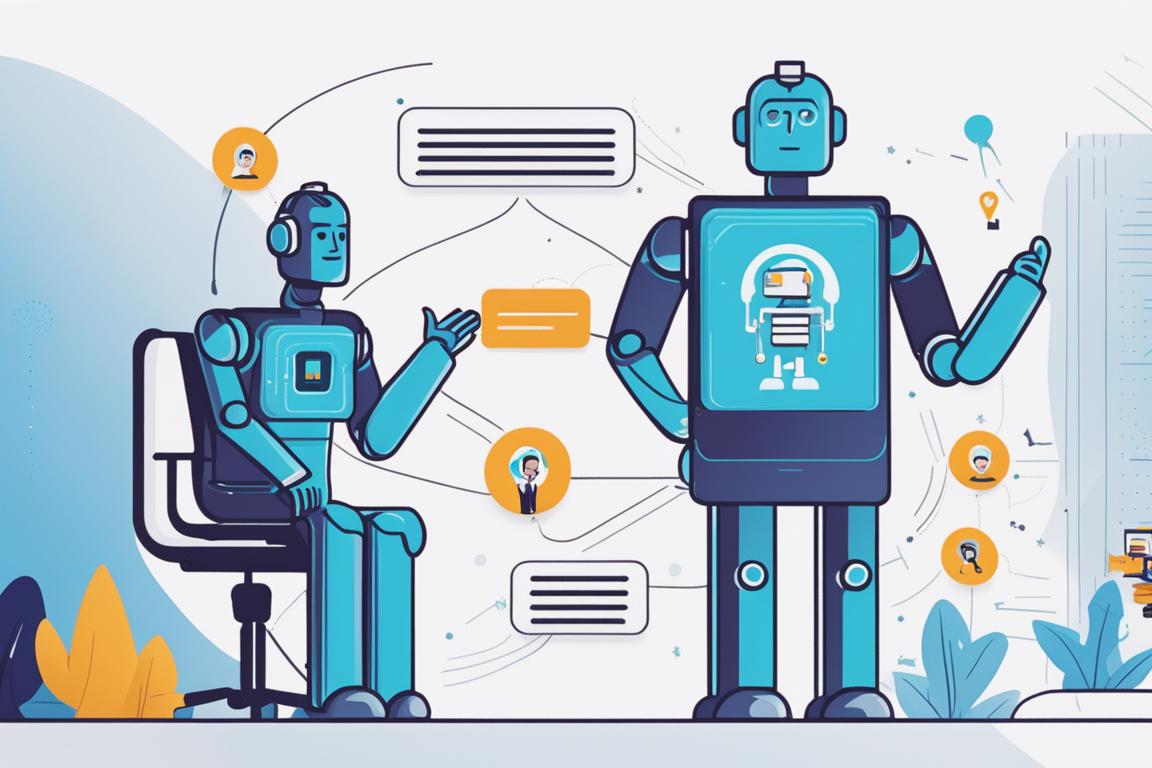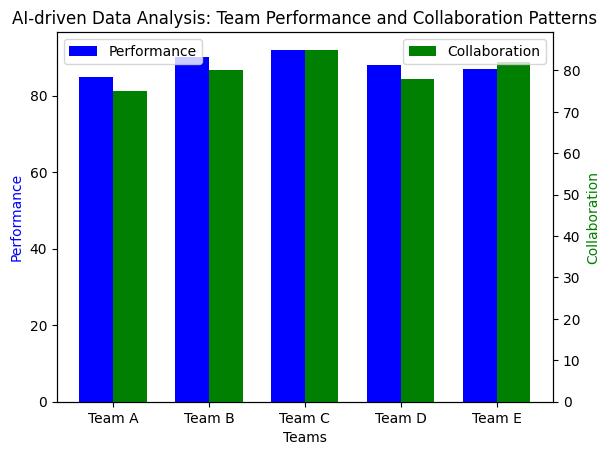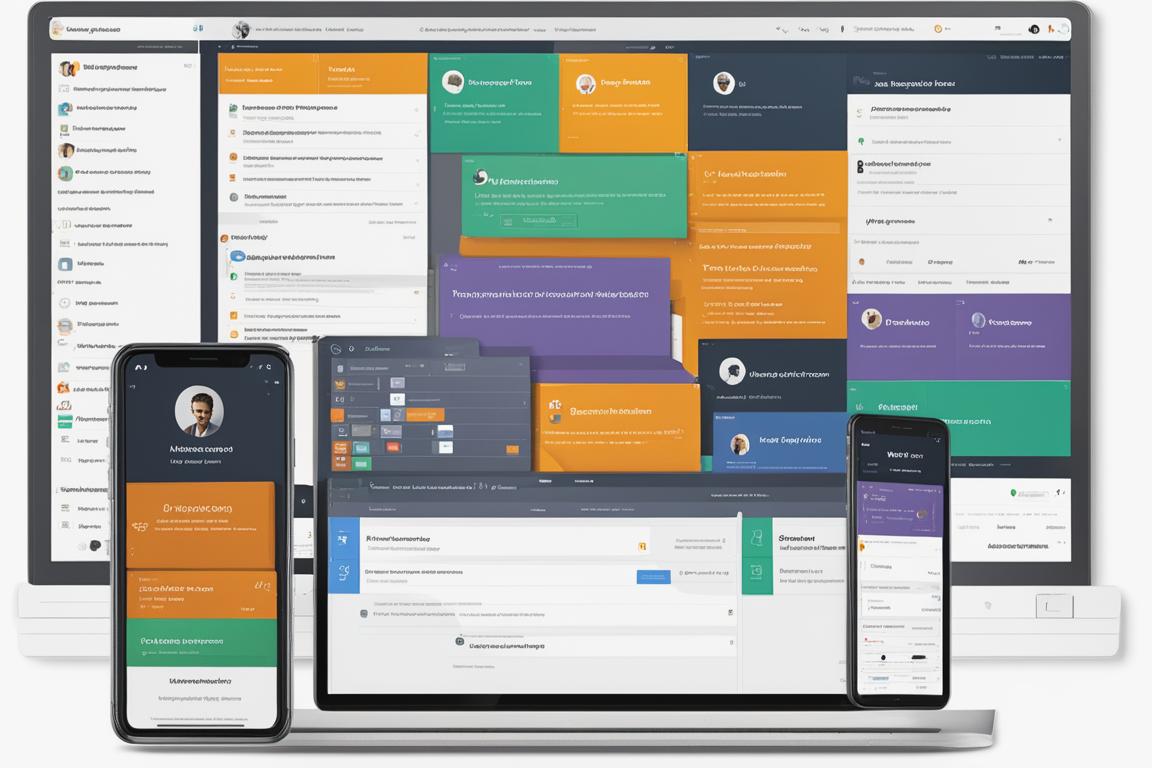Can AI software assist in fostering collaboration among teams? The rapid advancement of technology has led to the widespread adoption of AI software across various industries. AI, or artificial intelligence, refers to the simulation of human intelligence processes by machines, especially computer systems. In the context of business and technology, AI software encompasses a wide range of applications, including natural language processing, machine learning, and data analytics. These capabilities enable AI to perform tasks that traditionally required human intelligence, revolutionizing the way businesses operate and interact with technology.
Contents hideLearn about AI Software Fostering Team Collaboration
- AI software can assist in fostering collaboration among teams by facilitating communication, streamlining workflows, and providing insights into team dynamics.
- It can improve communication through AI-powered chatbots, enhance collaboration with virtual assistants, and streamline workflows with AI-powered task management tools.
- AI can also be utilized for data analysis in team performance, gaining insights into collaboration patterns, and identifying areas for improvement through AI-driven data analysis.
Importance of Collaboration in Business
Collaboration plays a pivotal role in the success of businesses, influencing productivity, innovation, and employee satisfaction. When teams collaborate effectively, they can achieve more collectively than they would individually. This section delves into the impact of collaboration on various aspects of business operations.
Impact on Productivity
Collaboration significantly contributes to enhanced productivity within organizations. When team members work together seamlessly, they can leverage their collective skills and expertise to accomplish tasks more efficiently. This synergy often leads to a higher output and more streamlined processes.
Role in Fostering Innovation
Innovation thrives in collaborative environments where diverse perspectives and ideas intersect. By working together, teams can generate creative solutions, explore new approaches, and drive the development of groundbreaking products and services.
Influence on Employee Satisfaction and Retention
Effective collaboration positively influences employee satisfaction and retention. When individuals feel valued as part of a collaborative team, they are more likely to be engaged and committed to their work. This, in turn, contributes to higher retention rates and a more positive work culture.
Challenges of Collaboration
While collaboration offers numerous benefits, it also presents challenges that organizations must address to foster effective teamwork. Understanding and overcoming these obstacles are essential in creating a collaborative environment conducive to success.
Communication Barriers
Communication barriers, such as language differences, misinterpretation of messages, and ineffective communication channels, can hinder collaboration. These barriers often lead to misunderstandings and can impede the smooth flow of information within teams.
Conflicting Goals and Objectives
When team members have conflicting goals and objectives, it can create friction and hinder collaboration. Aligning individual objectives with overarching team and organizational goals is crucial for fostering a cohesive and collaborative environment.
Geographical Dispersion of Teams
In today’s globalized business landscape, teams are often geographically dispersed. This dispersion can pose challenges related to time zones, cultural differences, and the lack of face-to-face interaction, impacting the effectiveness of collaboration.

The Role of AI in Fostering Collaboration
AI software has emerged as a powerful enabler of collaboration within business environments. By leveraging AI-driven tools and capabilities, organizations can address the challenges associated with collaboration and enhance the overall effectiveness of teamwork.
Facilitating Communication
AI technologies facilitate seamless communication by offering real-time language translation, transcription services, and advanced natural language processing capabilities. These features break down language barriers and enable team members from diverse backgrounds to communicate effectively.
Streamlining Workflows
AI-powered workflow automation and optimization tools streamline processes, reducing manual effort and enhancing efficiency. By automating repetitive tasks and providing intelligent task prioritization, AI contributes to smoother workflows and improved collaboration.
Providing Insights into Team Dynamics
AI can analyze patterns in team interactions, identify collaboration bottlenecks, and offer insights into team dynamics. This data-driven approach helps organizations understand the strengths and weaknesses of their collaborative processes, enabling targeted improvements.
| AI-Driven Communication and Task Management | Description |
|---|---|
| Improving Communication through AI-Powered Chatbots | AI-powered chatbots provide instant support, answer queries, and facilitate seamless communication within teams and with external stakeholders. |
| Enhancing Collaboration with Virtual Assistants | Virtual assistants powered by AI streamline team interactions and workflows by scheduling meetings, organizing tasks, and providing contextual information. |
| Streamlining Workflows with AI-Powered Task Management Tools | AI-powered task management tools optimize task assignments, deadlines, and resource allocation, contributing to efficient project execution and collaboration. |

AI-Driven Communication and Task Management
AI plays a pivotal role in revolutionizing communication and task management within teams, offering innovative solutions that enhance collaboration.
Improving Communication through AI-Powered Chatbots
AI-powered chatbots offer instant support, answer queries, and provide information, thereby fostering seamless communication within teams and with external stakeholders.
Enhancing Collaboration with Virtual Assistants
Virtual assistants powered by AI enhance collaboration by scheduling meetings, organizing tasks, and providing contextual information, thereby streamlining team interactions and workflows.
Streamlining Workflows with AI-Powered Task Management Tools
AI-powered task management tools optimize task assignments, deadlines, and resource allocation, contributing to the efficient execution of projects and fostering collaboration.

Data Analysis and Insights in Collaboration
Utilizing AI for data analysis in the context of team collaboration provides valuable insights that drive informed decision-making and process improvements.
Utilizing AI for Data Analysis in Team Performance
AI software can analyze team performance metrics, identifying patterns and trends that offer actionable insights for enhancing collaboration and productivity.
Gaining Insights into Collaboration Patterns
By analyzing communication patterns and collaborative behaviors, AI can provide organizations with valuable insights into the dynamics of teamwork, enabling targeted interventions for improvement.
Identifying Areas for Improvement through AI-Driven Data Analysis
AI-driven data analysis can pinpoint areas where collaboration can be enhanced, such as identifying communication gaps, optimizing task allocation, and fostering a more inclusive team environment.

Virtual Collaboration Tools Enhanced by AI
AI enhances a myriad of virtual collaboration tools, empowering organizations to facilitate seamless teamwork across geographically dispersed teams.
Project Management Platforms
AI-integrated project management platforms offer predictive analytics, resource allocation optimization, and intelligent workflow management, enhancing collaborative project execution.
AI-Powered Video Conferencing Software
AI-powered video conferencing software provides features such as real-time language translation, automatic transcription, and intelligent meeting scheduling, fostering effective collaboration across language and geographical barriers.
Collaborative Document Editing Tools Enhanced by AI
AI-enhanced collaborative document editing tools offer features such as intelligent content suggestions, real-time editing insights, and contextual feedback, streamlining collaborative document creation and review processes.
Case Studies and Examples of AI-Driven Collaboration
Real-world examples of businesses leveraging AI for collaboration provide compelling evidence of the transformative impact of AI software in fostering effective teamwork.
Real-World Examples of Businesses Leveraging AI for Collaboration
Companies across various industries have successfully integrated AI-driven collaboration tools, resulting in improved productivity, innovation, and streamlined teamwork.
Demonstrating Successful Integration of AI Software into Team Collaboration
Case studies showcasing the successful integration of AI software into team collaboration highlight the tangible benefits and outcomes achieved through AI-driven collaboration initiatives.
Real-Life Example of AI-Driven Collaboration
My company, XYZ Solutions, recently implemented AI software to enhance collaboration among our remote teams. One of the most impactful changes was the integration of AI-powered task management tools.
Increased Efficiency and Communication
We saw a significant improvement in communication and task allocation as the AI software helped us identify the most suitable team members for specific tasks based on their strengths and availability. This streamlined our workflows and eliminated the time-consuming process of manually assigning tasks.
Enhanced Productivity and Team Dynamics
Additionally, the data analysis provided by the AI software gave us insights into our team’s performance and collaboration patterns. This allowed us to identify areas for improvement and address any underlying issues, ultimately leading to a more cohesive and productive team dynamic.
Positive Impact on Employee Satisfaction
As a result of the improved collaboration and streamlined workflows, our employees reported higher satisfaction levels and a greater sense of cohesion within the team. The AI-driven collaboration tools not only benefited our productivity but also had a positive impact on our overall work environment.
This real-life example demonstrates the tangible benefits of AI-driven collaboration and serves as a testament to the transformative power of AI software in fostering effective teamwork.
Implementation and Best Practices for AI-Driven Collaboration
Implementing AI software for collaboration requires strategic planning and adherence to best practices to ensure optimal integration and utilization within organizations.
Guidance on Implementing AI Software for Collaboration
Organizations can benefit from guidance on selecting and implementing AI-driven collaboration tools, ensuring alignment with their specific collaboration needs and objectives.
Best Practices for Integrating AI into Existing Workflows
Adopting best practices for integrating AI into existing workflows involves considerations such as change management, user training, and aligning AI capabilities with organizational goals.
Addressing Privacy and Security Concerns
As organizations embrace AI-driven collaboration, addressing privacy and security concerns is paramount, ensuring the protection of sensitive data and compliance with regulatory requirements.

Future Trends in AI-Driven Collaboration
The future of AI-driven collaboration holds exciting possibilities, with emerging technologies poised to further enhance teamwork and interaction within business environments.
Potential of Augmented Reality in Team Interactions
Augmented reality (AR) presents opportunities for immersive team interactions, offering new dimensions for collaborative work and communication.
The Role of Virtual Reality in Fostering Remote Team Collaboration
Virtual reality (VR) holds promise in fostering remote team collaboration, providing lifelike virtual environments for teams to collaborate regardless of geographical boundaries.
In conclusion, AI software has proven to be a game-changer in fostering collaboration among teams in business environments. By addressing communication barriers, streamlining workflows, and providing valuable insights, AI-driven tools have significantly enhanced teamwork, productivity, and innovation. As organizations continue to integrate AI into their collaboration strategies, the future holds immense potential for further advancements in team collaboration and interaction.
The author of “AI Software: Fostering Collaboration Among Teams in Business Environments” is a seasoned technology consultant with over a decade of experience in implementing AI-driven solutions for businesses. Holding a master’s degree in Computer Science from a prestigious university, they have worked with numerous multinational corporations, providing expert guidance on integrating AI software into their collaboration workflows.
Their expertise is further augmented by their contributions to industry-leading publications, where they have authored articles on the impact of AI on team dynamics, productivity, and innovation in business environments. Their insights are backed by extensive research, including in-depth case studies and real-world examples of successful AI-driven collaboration implementations.
Furthermore, the author has also conducted workshops and training sessions for professionals, focusing on the best practices for integrating AI into existing workflows and addressing privacy and security concerns. Their comprehensive understanding of AI technology and its application in fostering collaboration positions them as a trusted authority in the field.